Outliers and Comfort
Rethinking Classification¶
Let's have another look at the interactive canvas that we saw in the previous guide.
from sklego.datasets import load_penguins
from hulearn.experimental.interactive import InteractiveCharts
df = load_penguins(as_frame=True).dropna()
clf = InteractiveCharts(df, labels="species")
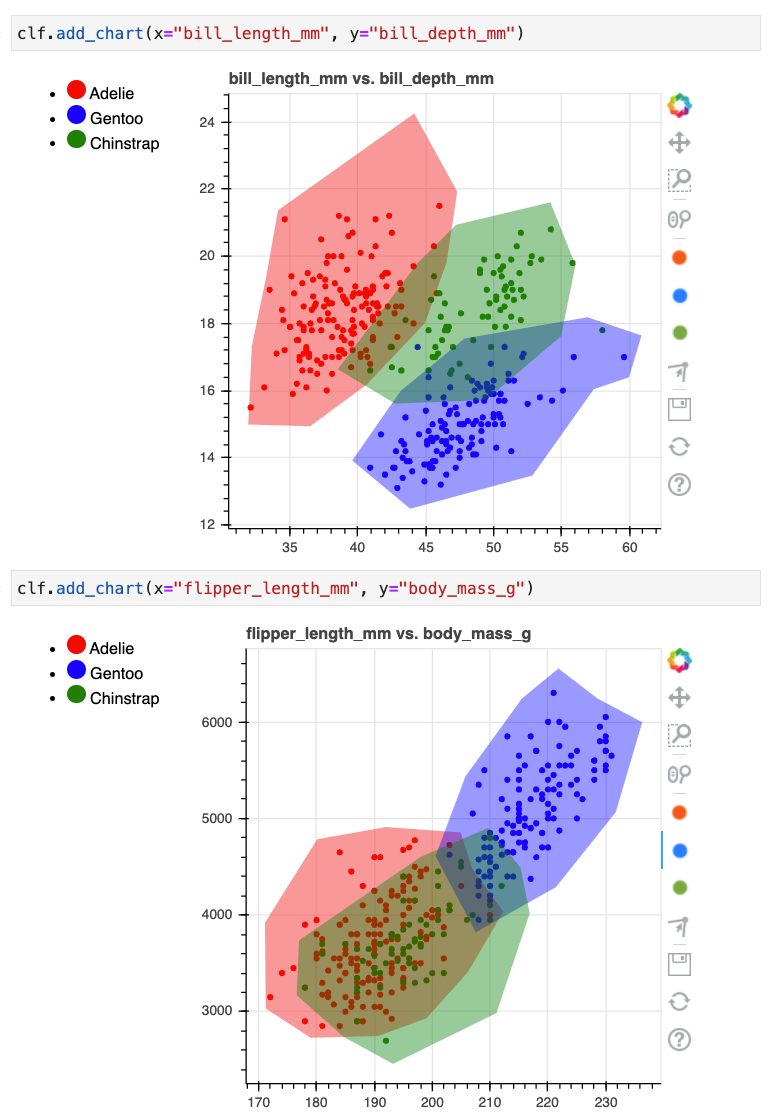
The drawn colors indicate that a human deemed a classification appropriate. You could wonder what we might want to do with the regions that have not been colored though. Machine learning algorithms might typically still assign a class to those regions but that can be a dangerous idea.
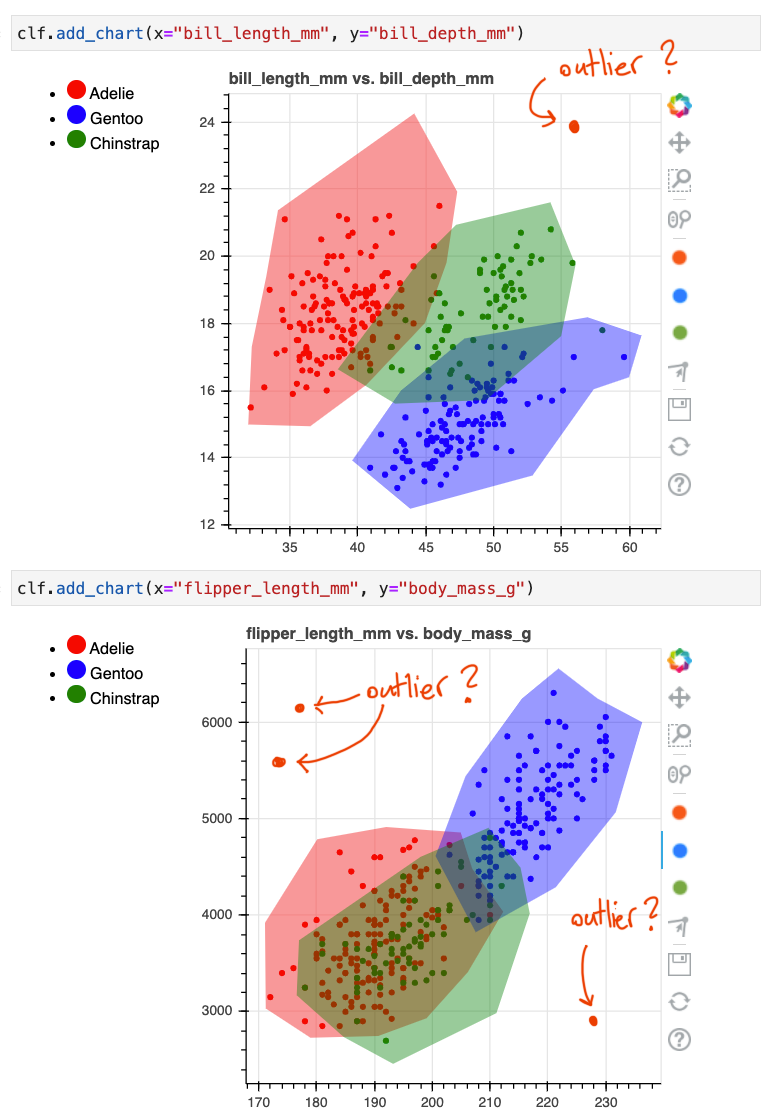
We might consider these points outside of the "comfort zone" of the predicted areas. In these situations it might be best to declare it an outlier and to handle it differently. That way we don't automate a decision that we're likely to regret later.
Outliers¶
The drawn charts can be used to construct a classifier but they may also be used to construct an outlier detection model. This allows us to re-use earlier work for multiple purposes.
from sklego.datasets import load_penguins
from hulearn.experimental.interactive import InteractiveCharts
df = load_penguins(as_frame=True).dropna()
charts = InteractiveCharts(df, labels="species")
# Run this in a seperate cell
charts.add_chart(x="bill_length_mm", y="bill_depth_mm")
# Run this in a seperate cell
charts.add_chart(x="flipper_length_mm", y="body_mass_g")
To demonstrate how it works, let's assume that we've drawn the following:
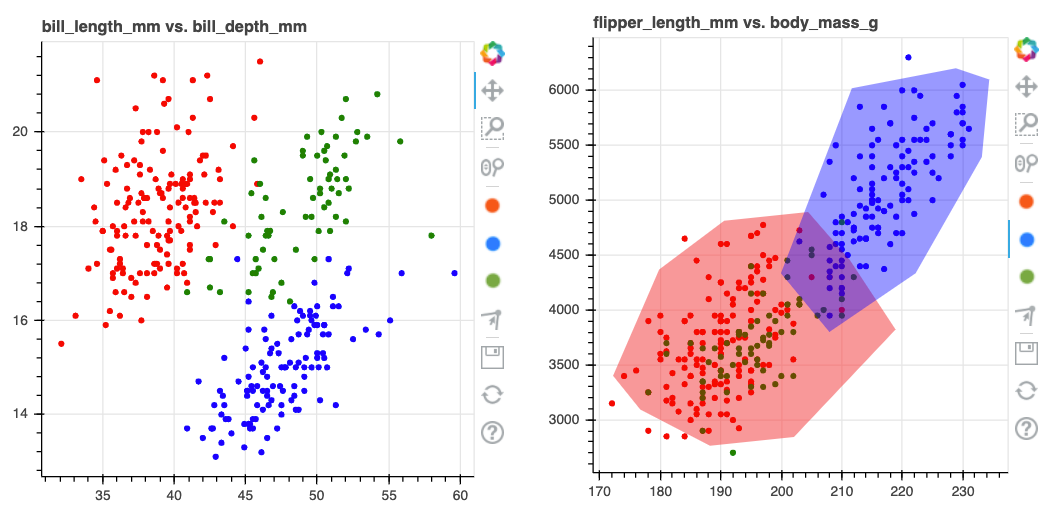
We'll again fetch the drawn data but now we'll use it to detect outliers.
from hulearn.outlier import InteractiveOutlierDetector
# Load the model using drawn-data.
model = InteractiveOutlierDetector(json_desc=charts.data())
X, y = df.drop(columns=['species']), df['species']
preds = model.fit(X, y).predict(X)
This model can now be used as a scikit-learn compatible outlier detection model. Here's the output of the model.
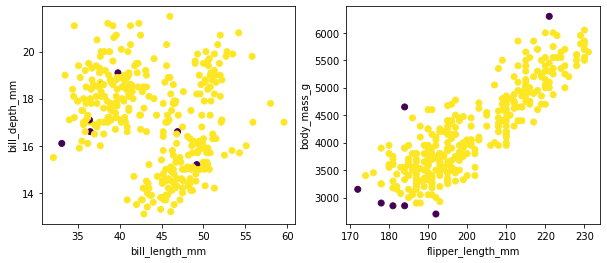
Code for the plots.
import matplotlib.pylab as plt
plt.figure(figsize=(10, 4))
plt.subplot(121)
plt.scatter(X['bill_length_mm'], X['bill_depth_mm'], c=preds)
plt.xlabel('bill_length_mm')
plt.ylabel('bill_depth_mm')
plt.subplot(122)
plt.scatter(X['flipper_length_mm'], X['body_mass_g'], c=preds)
plt.xlabel('flipper_length_mm')
plt.ylabel('body_mass_g');
How it works.¶
A point is considered an outlier if it does not fall inside of enough drawn polygons. The number of poylgons that a point must fall into is a parameter that you can set manually or even search for in a grid-search. For example, let's repeat the exercise. The base setting is that a point needs to be in at least one polygon but we can change this to two.
# Before
model = InteractiveOutlierDetector(json_desc=charts.data(), threshold=1)
# After
model = InteractiveOutlierDetector(json_desc=charts.data(), threshold=2)
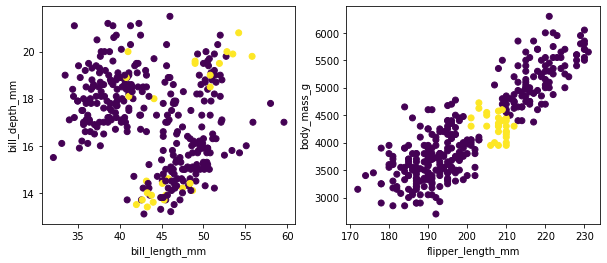
Combine¶
You might wonder, can we combine the FunctionClassifier with an outlier model like
we've got here? Yes! Use a FunctionClassifier!

As an illustrative example we'll implement a diagram like above as a Classifier.
import numpy as np
from hulearn.outlier import InteractiveOutlierDetector
from hulearn.classification import FunctionClassifier, InteractiveClassifier
outlier = InteractiveOutlierDetector.from_json("path/to/file.json")
classifier = InteractiveClassifier.from_json("path/to/file.json")
def make_decision(dataf):
# First we create a resulting array with all the predictions
res = classifier.predict(dataf)
# If we detect doubt, "classify" it as a fallback instead.
proba = classifier.predict_proba(dataf)
res = np.where(proba.max(axis=1) < 0.8, "doubt_fallback", res)
# If we detect an ourier, we'll fallback too.
res = np.where(outlier.predict(dataf) == -1, "outlier_fallback", res)
# This `res` array contains the output of the drawn diagram.
return res
fallback_model = FunctionClassifier(make_decision)